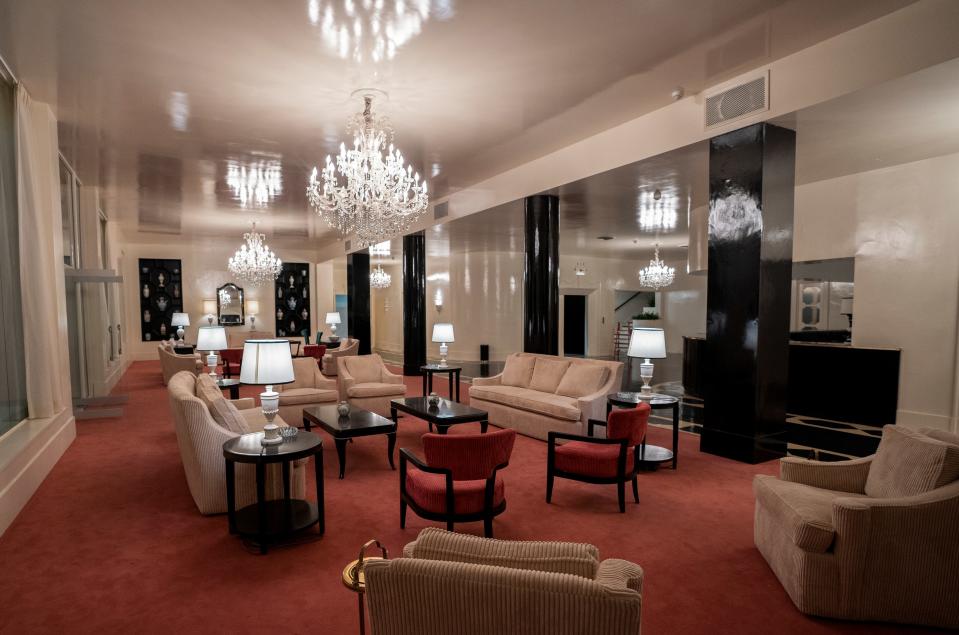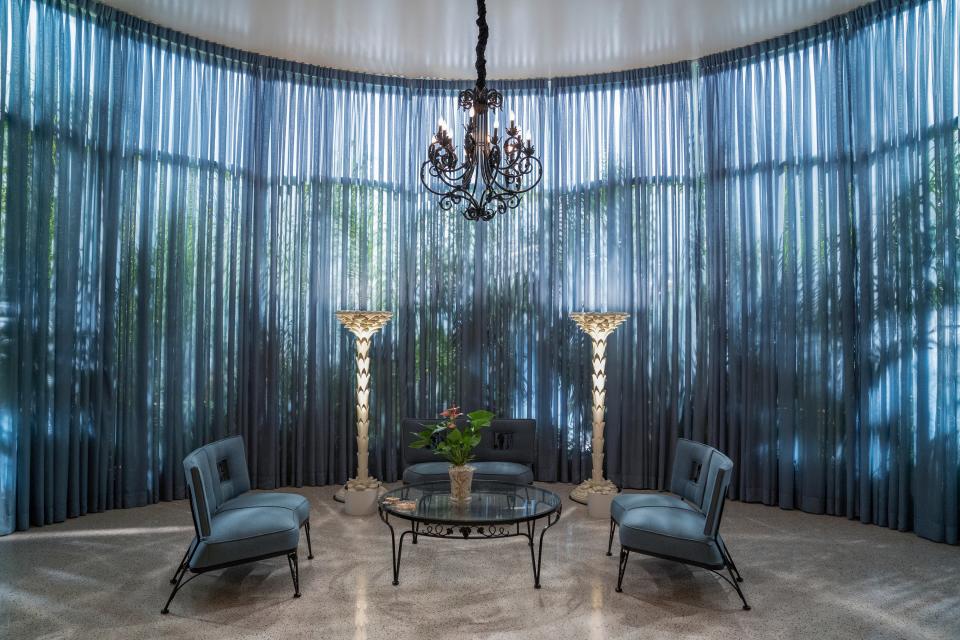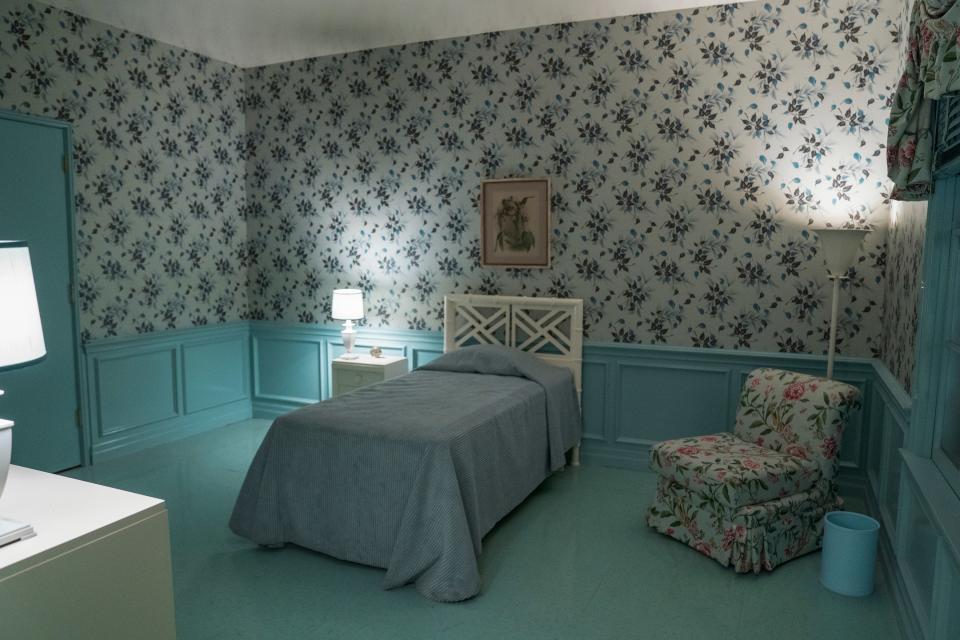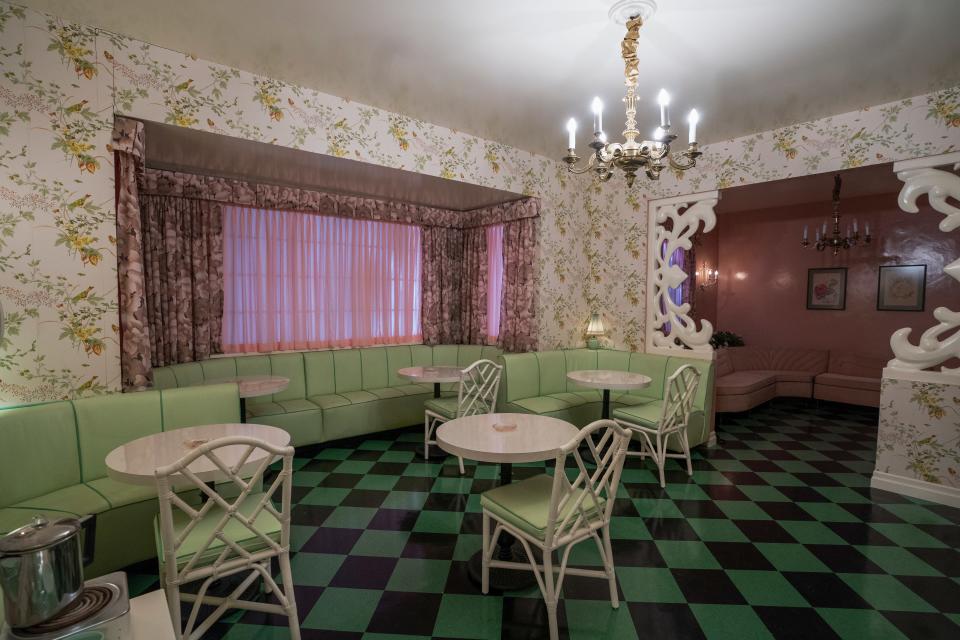Ratched Takes a Cue From Dorothy Draper
Gritty. Bleak. Depressing. Those are some of the ways to describe the Salem State Hospital, where one Mildred Ratched ruled with an icy glare and an iron fist, in the Oscar-winning 1975 film One Flew Over the Cuckoo’s Nest. Yet during the first concept meeting for Ratched—a 1947-set series that explores how the nurse became one of the most sinister villains in movie history—producer and creator Ryan Murphy told his team to put the iconic images out of their minds entirely.

Enter the ultra-elegant Lucia State Hospital in northern California, the locale at the heart of the eight-episode Netflix series (premiering Friday, September 18). Between its velvet lobby chairs and cozy pastel bedding in the rooms, the place looks warm and inviting to all guests who walk through its glass doors. That includes the tightly wound Ratched (Sarah Paulson), the new-in-town nurse who’s hiding a secret—and more than willing to perform the occasional lobotomy. “Ryan said he wanted it to look like a fancy hotel that had been repurposed into a hospital but still retained a lot of its glamour,” production designer Judy Becker, who also worked with Murphy on Feud, tells AD. “It’s supposed to look like you want to live there. It’s supposed to hide all the horrors. Because it doesn’t have that creepiness we all expect, it’s an even better foil for the events that unfold.”
For design inspiration, Becker and her team scoured hotel destinations in California. The search led to the six-story Arrowhead Springs Hotel in San Bernardino, a grand Georgian-style resort and spa designed by famed Hollywood architect Paul Williams and decorated by the legendary Dorothy Draper. (Judy Garland attended the grand opening in 1939!) “It’s a glamorous ‘institutional chic’ environment,” Ratched set decorator Matthew Flood Ferguson tells AD. Adds Becker, “The original detailing is still here. It was the perfect jumping-off point for our hotel-hospital.”


Like any good hospitality planners, Becker and Ferguson spared no detail in conceptualizing and outfitting the sumptuous interior at the Fox studios in Los Angeles. (The sprawling Gillette Ranch near Malibu doubled as the Lucia exterior.) In the lobby, guests can check in at a sleek nurse’s desk. It connects to an airy solarium with floor-to-ceiling curtains and matching table and chairs, all decked out in a dirty teal. The nurse’s break room resembles a “cute little restaurant inside an old department store, like a ladies’ tearoom,” Becker explains, noting that she was particularly influenced by The Birdcage restaurant in the former Lord & Taylor. Each guest room is named after the print seen on its custom vintage wallpaper, such as the Ivy Room, the Rose Room, and the Trellis Room.


Guests and staff also see green throughout the asylum, from the mint-colored carpeting in the Ivy Room to the seafoam seat cushions in the break room. “It conveys a lot of different emotions without being necessarily obvious,” Becker explains. “There can be pretty natural-looking greens, fashionable greens, queasy greens, and institutional greens. It also photographs really well and it’s a big part of what you see post–World War II.” Beyond the hospital, she says that the green curtains inside Ratched’s maple-wooded motel room, filmed at the 1930s-built Lucia Lodge cliffside resort in Big Sur, is a loving homage to the classic 1958 Alfred Hitchcock–directed thriller Vertigo: “Kim Novak’s character lives in a crummy apartment and there’s a green neon sign outside the window that lights the room and makes it look phosphorescent green. It’s incredible.” Becker notes proudly that she asked Ferguson to gather swatches “of every sheer green he could find” and light each fabric from behind until the exact replica was found.
Because of the specific color palette, Ferguson decorated the hospital using custom-made upholstered furniture made at SDM Co. and Sofa U Love. “We strove to recreate Dorothy Draper’s elegantly crafted interiors as accurately as possible,” he says. (Some existing Draper-inspired pieces were picked up at the Antique Mall in Pasadena, California, local prop houses, and the odd thrift store.) The wall sconces were also manufactured for the production, while the chandeliers were purchased from local rental houses. “The lighting fixtures were a deliberate part of the style used in hotels of that era and in any sort of glamorous Hollywood place,” Becker added. As a bonus, “the sconces in the hallway have an upward light and can give creepiness to the actors’ faces.”

Few guests ever check out of Lucia State Hospital, of course. But Becker did check in to the Lucia Lodge after production wrapped for a weekend stay with her husband. “It’s right on the cliffs of the ocean and in the middle of nowhere,” she raves. “I wouldn’t want to stay there for weeks, but for a few nights it was amazing.”
Originally Appeared on Architectural Digest

